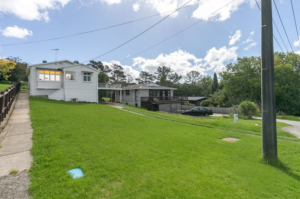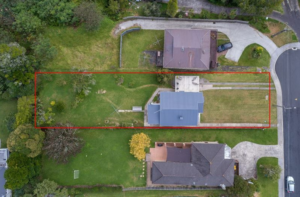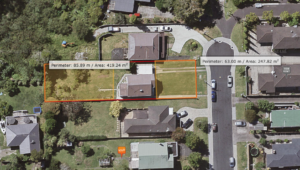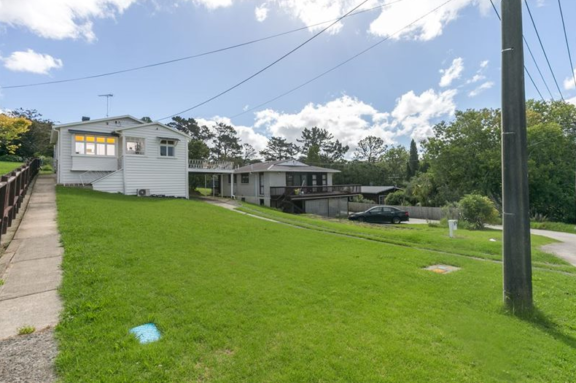








There are many factors to consider when subdividing, but the first step should always be to find out the zone of your potential purchase. Lets quickly look at an example of how knowing more about the Unitary Plan can help you make decisions on your next purchase.
This listing came on Trademe recently with the title:
“Land Bankers, Investors, & Developers, Your Attention”.
Like most listings, the agent is obviously trying to draw you in with a snazzy headline, and here the focus is on the amount of land rather than the house. It’s a long rectangular site, 933m2 in area, with a 1960’s weatherboard bungalow in the middle.
Checking through the photos there are more images showing the land at the front and the back of the house rather than of the house itself, so it must be usable land then, right?
The first check is to find out which zone it is in.
A quick search at homes.co.nz tells me it is Mixed Housing Urban. This is good as under MHU you can subdivide down to 1 lot per 300m2, so theoretically it’s a 3-unit site. Had this site been zoned Mixed Housing Suburban then it would have only been a 2-unit site as you can only subdivide down to 1 lot per 400m2, or even worse had it been Single House zoned it would only be a 1 unit site as the minimum lot sizes is 600m2.
So that’s great news, we know that there should be enough room to turn it into three sites, and again looking at the photos there should be plenty of room for this? I mean look at the size of that front yard!
On closer inspection however you will find that there is one big item in the way, and that’s the existing house. What you will find on many ‘subdividable’ blocks of land is that the existing house was not positioned with subdividing in mind (what were they thinking?) and this quickly could put a stop on your project as it prevents you from unlocking the equity you could build from 3 units and sticking to 2.
As you can see in the images below that while the back part of the site gives us enough room for a subdivided lot at 420m2, the front yard unfortunately doesn’t and can only manage 248m2 – we’re 52m2 short!
Don’t let this put you off as there are a couple of options we could use to make this work as a 3 unit site.
Demo the existing dwelling – of course, we could simply tear down the existing dwelling giving us an empty lot to build three new dwellings. For a full-time developer this is most likely the way to go, however, if you’re small scale and doing this part-time then remember you are removing your only source of income from the property so you better be quick with it and understand your timing well of the project process. The costs for the demolition plus additional new build would need to be factored into the equation.
Move the existing dwelling – the second option is to move the existing dwelling either forwards or backwards on the site to make room for the two new dwellings. Again there are going to be additional costs for this option and again the single source of income on the site will be temporarily out of action, so these factors need to be considered when planning the project.
Reconfigure the existing dwelling – while this option doesn’t work in this instance it can work in others. A lot of old villa’s for example often have lean-tos at their rear that can quite easily be removed if you needed to pinch a bit of extra space to fit the additional site and dwelling in behind it. Or you might have an existing dwelling which has had an extension done to it that again could easily be cut off the side and patched up. Make sure you get a qualified builder in to assess the dwelling before you go making any of these decisions.
So even if the house is in the wrong location there are still ways to make it work, you just need to get creative. The house location is very important for planning, but we haven’t even taken into account underground services, driveway location and design, overland flow paths, outdoor living spaces, yard setbacks etc., the list goes on.
Planning a subdivision is a tricky endeavour but one which can be deeply satisfying and rewarding (financially and emotionally) if completed correctly. The first step is to locate a site, find and understand its zone, then do a quick check to see if at a high level the project could work with the current dwelling and its location.
Don’t get fooled by agents with clever titles and no understanding of the Unitary Plan into thinking that every subdividable site is made equal, some will require a lot more work than others.
Here at I Am Developer we love subdivisions, so if you would like further advice on the subdivision process or help with choosing the next site for purchase, then contact us at hello@iamdeveloper.co.nz
We’ll be continuing these articles on what to look for in a subdivision project so make sure to keep an eye on our resources page.






Do you need help with your subdivision project?
Learn more